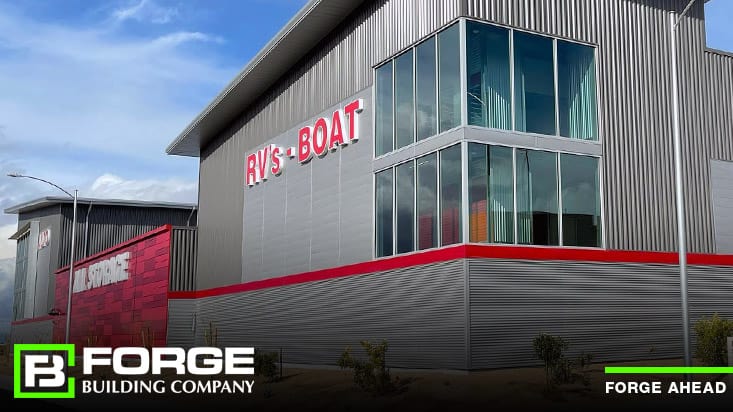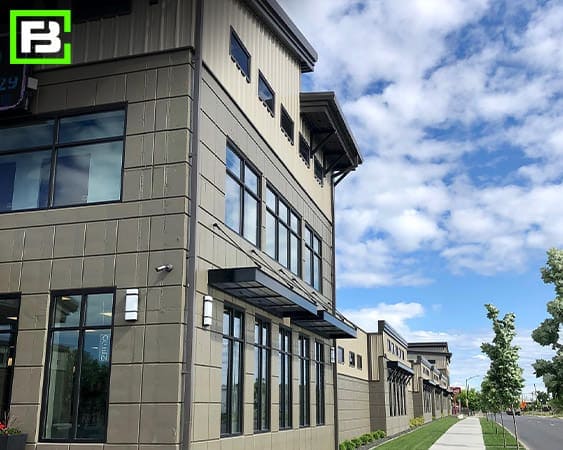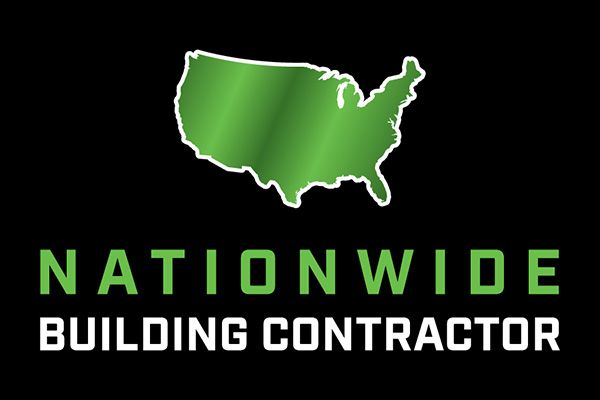
As a self-storage owner/manager, your approach to customer service can make the difference between securing a rental or losing a customer to a competitor. However, in today’s environment, self-storage tenants demand even more. To win them over, you must create the ultimate customer experience.
Prospects visiting your property are generally there for one of a few very specific reasons: to rent a unit, buy packing supplies, pay a bill, or discuss a rental-related issue. Your job is to make these tasks as easy as possible by removing barriers, obstacles, and complications. Therefore, your service approach is vital.
Customer service is all about the interactions you and your employees have with potential and current tenants in person, over the phone, and via e-mail, text, or other online channels. It always involves human interaction. The customer experience includes every way and place a person interacts with your business, even when there’s no person involved.
Today, the customer experience requires more wow factor thanks to an evolving market filled with creative websites, social media, online reviews, mobile apps, and other technology (see our recent blog, “Technology – What You Need for Your Self-Storage Business”). The self-storage customer experience consists of everything from finding and renting a unit online to entering the gate to opening the unit door. There are many opportunities for it to go right, and as many opportunities for it to go wrong.
The following are easy ways to elevate the customer experience and better connect with prospects and tenants, which can help you grow your business.
It’s absolutely imperative that any customer-facing staff properly represent your self-storage operation. The right facility manager must be enthusiastic, energetic, and integrity. He/she must have a positive, can-do attitude and a customer-centric mindset.
A friendly face goes a long way in customer service. Warmly greet your current and potential customers when they contact you to make a great first impression and solidify a reputation for positivity with each interaction.
If a prospect shows up at the front door, come running. Make sure you’re always accessible, no matter where you may be on the property. If a customer knows you’re dropping everything to help him/her, he’ll appreciate the level of service you provide.
First impressions are vitally important, so greet everyone with a smile and kind words. Here are some other things you can do:
 Every customer has a preference for communication. Your customer service should offer several lines of communication, including email, texts, online chats, and phone service, so anyone can get in touch the way they feel most comfortable. A willingness to meet lessees halfway is a valuable trait for any customer service team.
Every customer has a preference for communication. Your customer service should offer several lines of communication, including email, texts, online chats, and phone service, so anyone can get in touch the way they feel most comfortable. A willingness to meet lessees halfway is a valuable trait for any customer service team.
Having a personal connection with you directly at their local facility will bolster customers’ confidence in your business. Customers appreciate businesses treating them like real people rather than numbers, adding to their bottom line. Take the time to learn your customers’ names and a little about them. If your customers feel at home, they’ll keep coming back Additional tips to consider:
Be open to not only phone calls and in-store visits but to emails and other forms of communication. Customers may send questions or requests via text, Facebook Messenger, Instagram, Snapchat, or similar platforms. If you aren’t prepared to engage in online chat with them, but your competitor is, guess who will win the rental? Additional tips to consider:
Stay in touch with existing customers as well as prospects and former tenants. In times of uncertainty, it’s especially important to be reassuring. Thank them for their business and let them know you’re thinking of them, without trying to sell them anything.
Give tenants the option to opt-in for text messages. Send e-mails containing news, announcements, and other important information. Don’t hassle or upsell; just tell them about the necessary stuff like holiday office hours, discount coupons for loyal tenants, and digital copies of lease and insurance documents.
Additional tips to consider:
Review your facility as a whole. Your company needs a logo and color scheme that’s universal from store to website to social media platforms to print materials. Your business name should be consistent everywhere it appears. If you rebranded an existing facility, look for any places where the old name and logo still exist, as this will confuse customers. Keep your logo and colors uniform so people always know they’re in the right place.
One of the biggest assets for a positive customer experience is your website. Your website should be easy to find and use. If images take several seconds to load or your platform isn’t mobile-friendly, it will have a negative effect on prospects and customers.
Content for your web presence is the single most important thing for search engine optimization and for prospects and customers to be able to quickly find your business. This includes your blog posts, social media, landing pages, FAQ pages, video, and everything else that relates to your business and lives online.
Other helpful technology that will improve the customer experience includes any automation you use, security and access tools, digital signage, and property-management software that facilitates online rentals and autopay. Remember, customers expect technology that’s easy to use, available around the clock, nice to look at, and engaging.
 Creating a positive customer experience starts by listening attentively. This means thoroughly absorbing, understanding, responding, and retaining what is being said. While sales are central to any business, listening to a prospect’s specific needs and providing customized solutions is paramount for gaining and retaining a customer.
Creating a positive customer experience starts by listening attentively. This means thoroughly absorbing, understanding, responding, and retaining what is being said. While sales are central to any business, listening to a prospect’s specific needs and providing customized solutions is paramount for gaining and retaining a customer.
Practice asking questions that will give you more marketing insights and improve the customer experience, such as:
The reason a customer chooses or needs to store his belongings isn’t always pleasant. It could be caused by circumstances such as divorce, job loss, eviction, or the death of a loved one. While offering sympathy might be the first, instinctive response, being empathetic is what will stick in a tenant’s mind long after the moment. Try to remember what it’s like to experience a break-up; what it would feel like if your spouse lost his job, or a grandparent passed away.
Does your facility offer coffee and tea, or chilled water for customers? How about free Wi-Fi to help them while they’re between houses (and internet providers)? Other value-added services could include:
One of the ultimate ways to create the ultimate customer experience is to put yourself in the customer’s shoes. Is your company easy to find online and what information is available? Is your website easy to read and use? Is all content up to date? Walk through the experience of renting a unit, visiting the site, and accessing the unit. Was anything surprising? Confusing? Alarming? Go about this drill as if you’re someone who knows nothing about the industry and see how easy it is to navigate the process of looking for, renting, and using self-storage.
The connection you make with customers by using these strategies and how you fulfill their needs are ultimately what will make your customers' experience pleasant and help with retention and referrals in the future.
 Whether you’re a seasoned veteran or new to the self-storage business, it is key that you learn how to identify and understand your target market using demographics as a tool. The correct use of this date is vital to your facility’s success. As with any real estate business or investment, location is of the utmost importance for a self-storage facility. It’s critical to understand your market, particularly if competitors are closing in.
Whether you’re a seasoned veteran or new to the self-storage business, it is key that you learn how to identify and understand your target market using demographics as a tool. The correct use of this date is vital to your facility’s success. As with any real estate business or investment, location is of the utmost importance for a self-storage facility. It’s critical to understand your market, particularly if competitors are closing in.
Demographics are the statistical data of a population within a defined geographic area. This usually includes population, age of the population, race, housing types, income levels, education levels and more. Knowing these details about your market will help you to make decisions about how to attract and service customers.
Sometimes you find a tract of land that looks good for self-storage. You may have driven around the area and become familiar with all the competitors, watched the traffic flow by the site, feel the price is right, and think local government officials will approve your development plan. When you look at the demographics reports for the area, you may find the region has a very low-density population and a very low-income level per person and household. However, you also may discover the majority of local residents rents their homes, and most of those live in multi-family units such as apartments or mobile-home parks. By doing some shopping, you find out the competitors are all full in their smaller unit sizes, and they’re all comparable in price. Second, you learn there’s sometimes a waiting list for certain unit sizes.
This information would tell me that in spite of the low density, a lot of this population appears to need storage, since the housing units are small, and they’re probably already using storage on a regular basis. The fact that unit prices are all on par indicates that price is important to this market, but there may be an opportunity to get slightly higher rents. The data also indicates that you probably shouldn’t build a “Cadillac” storage center when a mid-priced Chevrolet might work.
This information is, of course, just the beginning of what you would need to decide about whether to build, but it demonstrates how knowing market demographics can be extremely useful.
If you already operate a self-storage facility, and you’re noticing some drops in occupancy, using demographics reports can help you find out information such as:
 This presents a couple of interesting possibilities. For example, should you create any of your marketing materials in Spanish? What about putting some marketing materials together that show how freeing up room in the garage or carport makes for a less cluttered home and allows the homeowner to enjoy his space? You can even demonstrate how the average household should have some disposable income, since each home is well within the average income level for the area.
This presents a couple of interesting possibilities. For example, should you create any of your marketing materials in Spanish? What about putting some marketing materials together that show how freeing up room in the garage or carport makes for a less cluttered home and allows the homeowner to enjoy his space? You can even demonstrate how the average household should have some disposable income, since each home is well within the average income level for the area.
Using this data, you could also tell you that your market population is somewhat sophisticated and, thus, more prone to have a mobile device or computer. Now your method of advertising delivery can be varied and less costly.
These are just a couple of ways demographic information can be helpful. This information can also be used to determine unit pricing. If you find your area has a higher than average per-capita income level, it would be safe to assume your pricing could be a little higher. Conversely, if you’re having a hard time renting at your asking rates, you might want to look at the income levels in your market and make the appropriate adjustments.
Once you’ve identified your market using demographic data, it can be a useful tool in managing your marketing campaigns, determining which advertising sources to use, adjusting rental rates, predicting the unit types most likely to rent, etc. By knowing your market income levels, housing types, educational levels and more, will make your facility more productive and efficient. The use of demographic data is key to having a successful self-storage facility, whether it’s new to the market or well-established.
When you are ready to build or modify your self-storage facility, the team at Forge Building Company can help you achieve your goals. Give us a call to discuss your project.
To view our some of our recent project, see https://forgebuildings.com/projects/

As residential populations grow and construction projects rise, Forge Building Company is undergoing a nationwide expansion to keep up. The company is constructing ten new storage building projects that will include over 600,000 square feet of facilities in six different cities in Idaho. This is in addition to over 35 other projects planned throughout the country — including in Hawaii, Florida and New York — totaling over $200 million heading into 2022.
“We either had to grow to handle the volume of growth, or hand-select (projects),” said co-founder Hamish Bell. “We chose to grow.”
“There’s a fine line; it’s like what jobs do you want to turn down, but when you have clients that you been (working) with for 5-10 years (wanting) to do five projects in a year instead of one, you got to adapt and grow with them, or else they will leave you behind and find someone else,” added co-founder Hayden Farrell.
View Press release here: Boise storage building company announces nationwide expansion
In. 2022, the average development takes 10-12 months to complete and can range from $2 million to $10 million. Each development will be a Class “A” development with a mixture of non-climate, climate-controlled and storage for recreational vehicles and boats, with some elements of retail mixed throughout. Since the beginning of the year, the company has added over 50 employees (now up to around 250 people).
“It’s not easy,” said Farrell. “It takes time to train up project managers, drafters (and others) to take on increased volume. I think we had good structure…key players who have been here quite a while — to train up people.”
Founded in 2007 by veterans Hamish Bell and Hayden Farrell, Forge Building Company has become a comprehensive steel building expert and provider. With over two decades of experience as a nationwide storage builder and a portfolio of over 500 projects spanning 50 million square feet of construction, Forge Building Company, the self storage experts, remains privately owned and operated in Boise, Idaho.